QUEENS OF THE SEAS_PART 1
Genoa, Pisa, Amalfi, and Venice.
What do these four Italian cities have in common? Besides being well-known hotspots of the Bel Paese (“beautiful country”) and running along the perimeter of the boot-shaped country, they have a glorious past to be proud of.
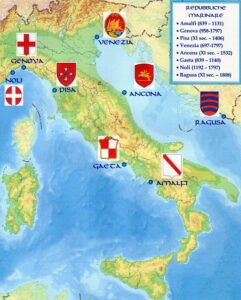
In reality, these are only the four most famous of a group of eight city-states that existed from 800 to the beginning of the 1800s; these Maritime Republics were a powerful presence in the Mediterranean Sea.
Although, on this occasion, we will focus only on the four above, we would also like to mention the other equally strong and important republics of Noli, Gaeta, Ancona, and Ragusa—the modern Dubrovnik—which was the last to disappear in 1808.
CITY-STATES
The magnificence of these cities—which today celebrate tourism vibrantly—goes back to a glorious past as queens of the known seas, playing a crucial role in the history of commerce and navigation. They benefitted from their political autonomy and enjoyed the economic prosperity that came from their maritime power.
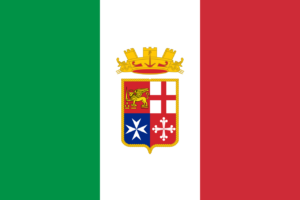
As city-states they had their own laws, and even their own currency, which was recognized and accepted in the whole of the Mediterranean. They had a republican government, directly elected by their citizens (apart from Venice, in the beginning) and their representatives established “colonies” in major strategic spots on the coast of the known world. Free from the limits of feudalism, which at the time was predominant in the entire peninsula, they could continue their trade with the eastern world, connecting Europe with Asia and Africa.
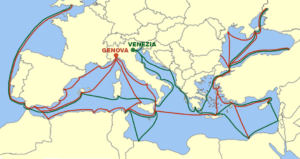
Together with the precious materials, fabrics, and goods that they transported from faraway lands, they also brought news, stories, and also new artistic ideas. Their role as merchants allowed them to be exposed to different cultures, creating space for both the mental and material enrichment of the people with whom they connected.
It is worth remembering that they gave birth to figures like Christopher Columbus (from Genoa) who set sail to “discover” a new world in the west, and Marco Polo (from Venice) who went exploring in the east and opened up new roads.
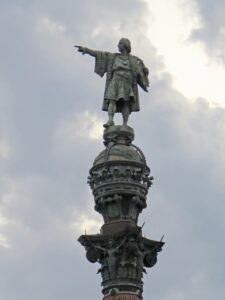
Their mastery of sea commerce was paired with shipbuilding skills, which also set them apart in the role they played in the crusades against the non-Christian Saracens, as well as against the pirates who were disseminating chaos and depredation in the seas.
Let’s have a closer look at these four valiant cities.
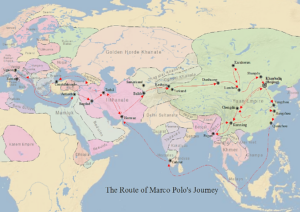

SIMILAR BUT DIFFERENT
The main four Republics were located in different corners of Italy and on very different geographical territories: a lagoon; an old commercial port; a small town in a natural port protected by mountains; and a city built on a river. The barbaric invasions determined the birth of two of them—namely Amalfi and Venice—while the arrival of Napoleon determined the end of the most powerful of them.
AMALFI
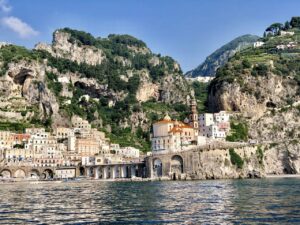
The small, pretty town of Amalfi, with a current population of 5,000, gives its name to the charming 34-mile-long coastline that runs from Positano to Vietri sul Mare and was the first Maritime Republic in the world. Part of the Roman-Byzantine dukedom of Naples, it became independent in 839 and contributed to the salvation of the Eternal City, Rome, in 849 from a heavy attack by the Arabs. Its commercial and military fleet continued its trade until it was defeated by the Norman Palermo.

Amalfi can also claim other significant achievements. The republic developed the Tabula Amalphitana, which was the first maritime constitution ever to exist and which regulated navigation in the Mediterranean for 700 years. It is also recognized that a sailor from Amalfi invented the compass.
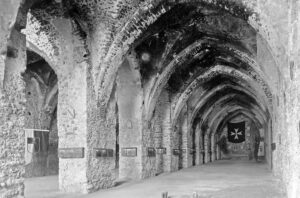
PISA

Pisa seems to be the only maritime power without direct access to the sea. However, this is only an apparent contradiction. Across the centuries, the two rivers of the delta on which the city was born have gradually altered the landscape. Due to a natural geological process called sedimentation—the movement of sand and debris towards the sea by the rivers—the coast changed and the city was no longer directly on the sea anymore.
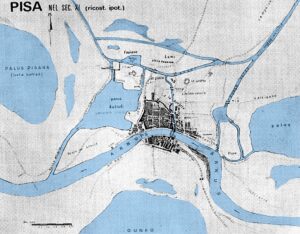
At the time, when Pisa became a Maritime Republic, fighting the Arabs together with its neighbor Genoa, it already possessed a complex harbor. This was strengthened by an extensive system of canals and waterways, which provided it with an enviable strategic position that was protected from the open sea. Its power finally ended with its defeat in the battle with Genoa in 1284, when the Genoese made the strategic decision to destroy its major strength, its port, and sentenced Pisa to its inescapable decline.
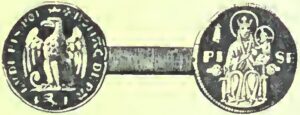
Words by Elisa Spampinato


